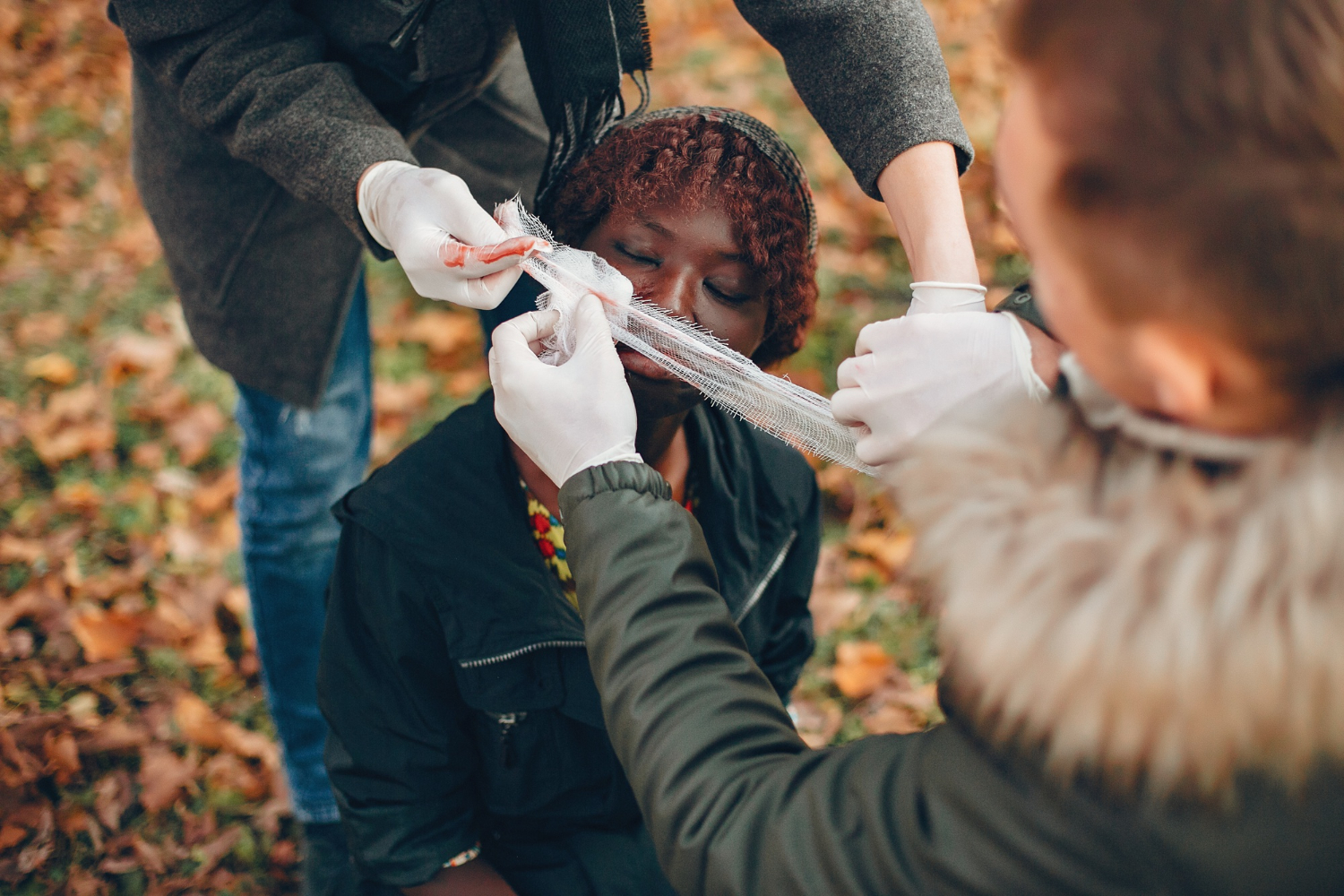Did you know that around more than 40 percent of deaths are caused by hemorrhage (severe bleeding)?
The human mind is quite a complex yet very interesting place; while it remembers all the chaotic day-to-day tasks and activities, it forgets to recall or study first aid training. This might sound like something you might not need right now.
However, life has a funny way of knocking at your door when you least expect it. This means that it is fundamental that you are aware of first aid measures that can come in handy in any emergency situation. It could be saving a stranger, a friend, or a family member’s life. There are different types of first aid measures for different conditions. This article will be a complete guide for you to provide first aid for bleeding
Types of Bleeding
There are two types of bleeding: internal and external. Internal bleeding may or may not be visible or display signs or symptoms on the body such as head or lung injury. External bleeding causes severe blood loss even from a small injury. Most of the time, excessive bleeding leads the injured person to go into shock, which means that they do not have enough blood circulating in their body, which can be fatal and causes a hemorrhage.
It is important to note here that this is the single most preventable cause of death. Hence the following steps cover the indications and care you will need to know to provide first aid for bleeding while preventing injuries from turning into life-threatening cases.

Causes of Severe Bleeding
There can be different causes that could define the type of bleeding and can help you gauge the severity. They might be related to cutting or damaging the blood vessels, amputating a body part, foreign objects embedding into a wound, etc. The color and flow of blood will help you in assessing the severity and type of injury.
Signs & Symptoms Indicating Severe Bleeding
Assessing the extent of any bleeding situation is critical. It directs you to use your knowledge to your benefit. When providing first aid for bleeding, take notice of the injured patient’s condition. Observation is key here; some signs that you need to detect are listed here. These will help you in deciding the next course of action.
-
Visible and Invisible Blood Loss
Check for oozing, flowing, and spurting of blood. If you notice bruising or swelling this might be an indication of internal bleeding.
-
Detectable Signs on the body
Symptoms of pain, tenderness, dizziness, paleness and progressive loss of consciousness will indicate the severity of the bleeding. In this case, follow the steps of first aid for bleeding carefully.

Measures to Take When Providing First Aid for Severe Bleeding
Take the following steps to help provide first aid for bleeding and prevent a severe emergency.
-
Call the Local Emergency Number
You should immediately call 911 or the local emergency in case of an accident causing severe bleeding. When the emergency arrives, help the injured carefully; placing them so that further injury can be prevented.
-
Remove or Cut the Clothing
Meticulously cut and remove the clothes covering the wound, however, do not try to clean it. Moreover, do not try to treat it yourself by probing and inspecting it further. Do not try to remove any foreign objects.
-
Lay down the Injured Person
Ensure the injured person is laid on a warmer surface; a blanket or a rug to prevent body heat loss. Have the injured body part lifted and supported above the heart; if the person is going into a shock, have his legs elevated. Be gentle with this step in case there is a broken bone.
-
Stop the Bleeding
You need to be calm in this situation and try to methodically recall the steps of first aid to stay focused and composed. For this, it is recommended you take level 2 award training for life support. Start by covering the wound with a sterile gauze or clean cloth, and press on it to stop the bleeding. However, do not press an eye injury or a skull injury if you suspect a fracture. Wrap the wound with a bandage.
-
Secure the Wound
Keep checking the bandage for any blood seeps, in which case, add more bandages over the existing bandages. Press the area firmly till the emergency help arrives.

-
Monitor Bleeding
Check the bleeding under the bandages and ensure that the bleeding has stopped or that the pressure has not stopped the blood circulation below the wound.
-
Monitor Response
Monitor their response by conversing with them; you can reassure and calm them to prevent them from going into shock. If the situation exacerbates and they become unresponsive, prepare for CPR.
FAQs
What should I do if a foreign object penetrates the wound?
Do not remove the object, as it acts as a plug to stop further bleeding. Make sure you are not applying pressure on it but around it.
Should I clean the wound or wash it?
The wound should not be washed, cleaned, or probed as it worsens the bleeding in case of severe injuries. However, smaller cuts can be washed or cleaned.
If a person starts losing consciousness and gets pale. What does it mean?
This indicates that the person is losing blood fast. It causes a lack of oxygen in the body leading to shock and hemorrhage, which is fatal.
If this happens, keep applying pressure to the wound to slow blood loss and try talking, calming the person down. Have their feet lifted above their body/heart? Follow the steps of first aid for bleeding or check out these courses provided on it.
Can I catch an infection or something when I am in contact with their blood?
It is unlikely for you to catch something unless you are cut yourself but it is recommended to use gloves or a plastic bag when treating them.





